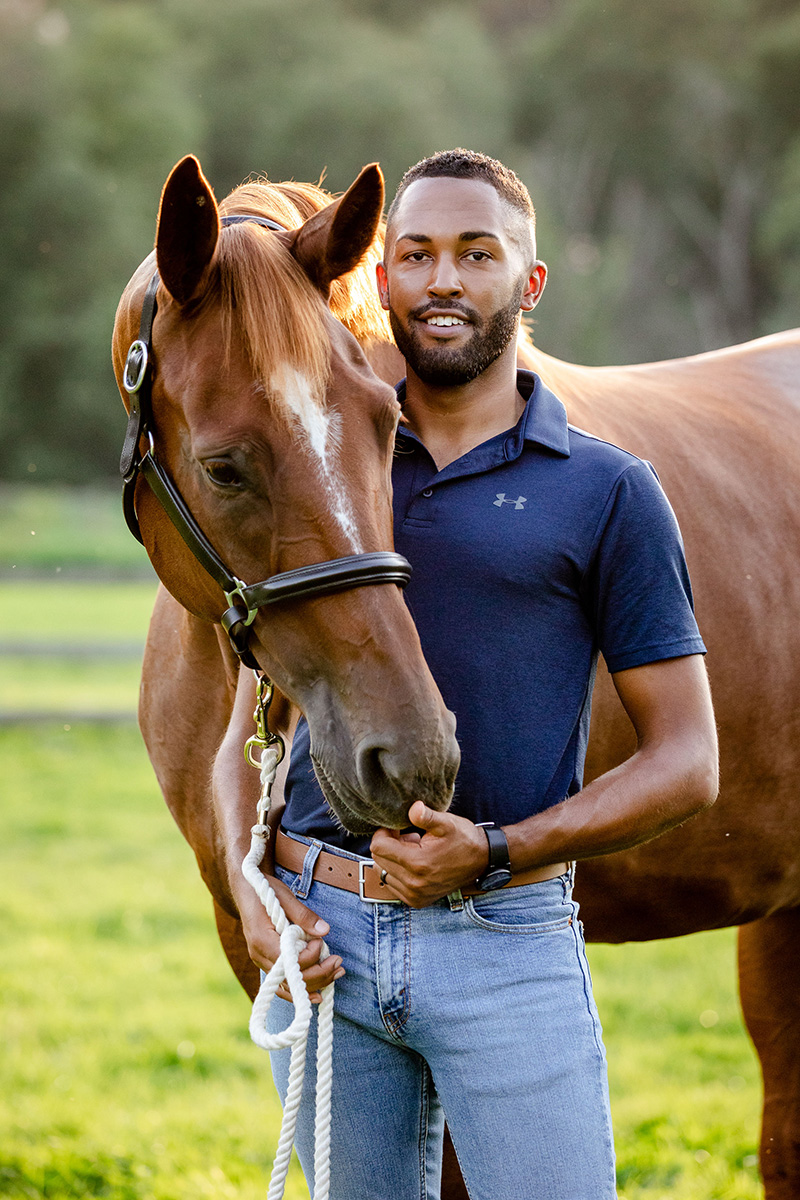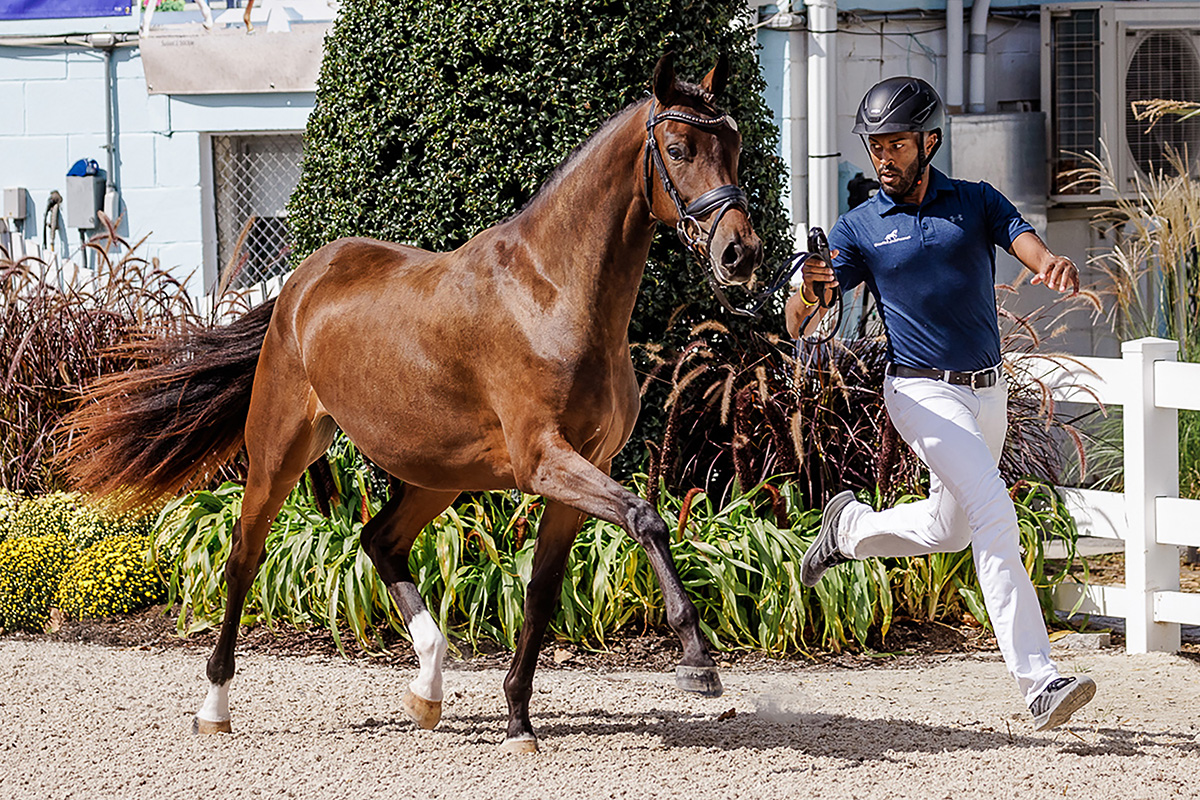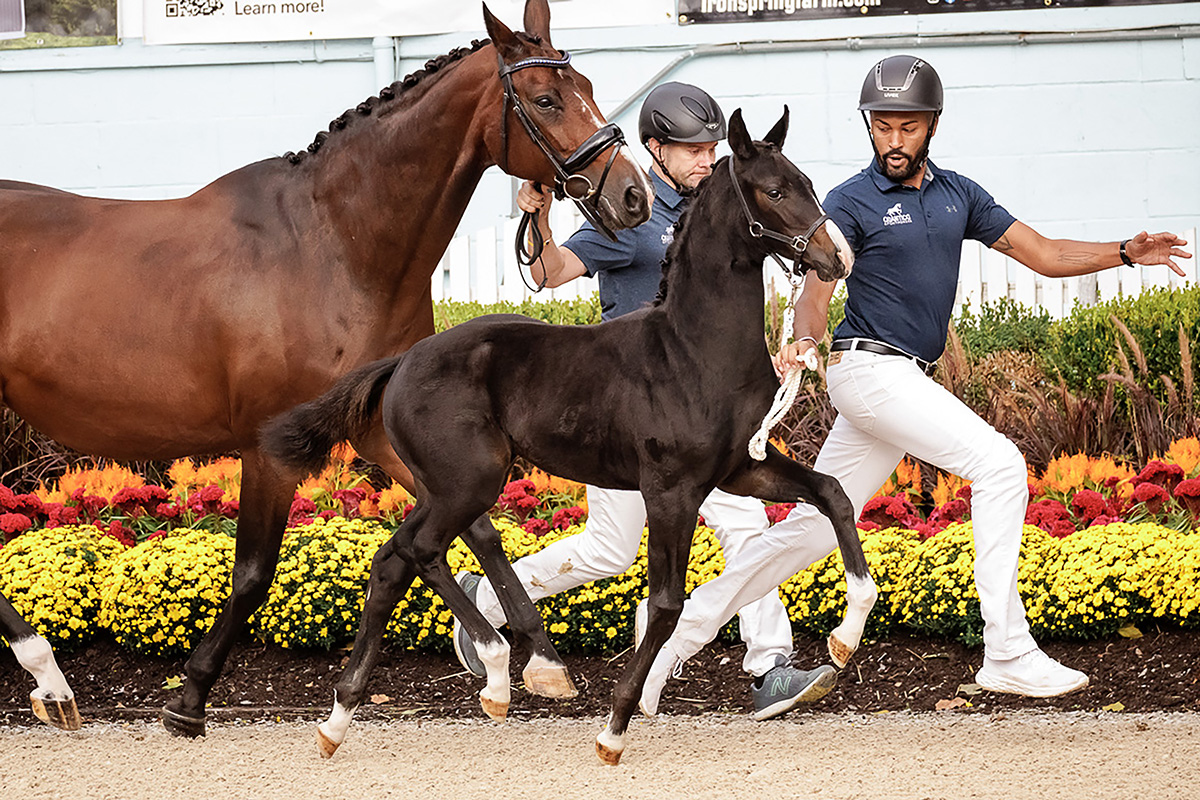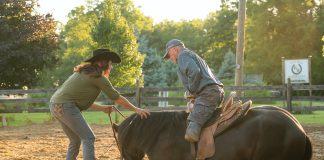Read the full article about showing in hand in Horse Illustrated’s June 2024 issue! Here is some great content we couldn’t fit in the print article.
Tips to Polish Performance

◆ When I am moving with the horse, I may start with smaller strides to make sure the horse is “with” me or to collect before the corners so that the horse knows a turn is coming, but otherwise, I show the horse’s gait to the best of its ability.
◆ Although some handlers may, I do not stop to collect at each corner of the triangle. Sometimes the horse will break into the canter (from trot), but I just make a small correction back to the trot and we continue on. Often, the first few steps of trot after a canter can be high quality, so I don’t worry about them breaking gait too much.
◆ The most important thing is to keep yourself relaxed, with the hope that the horse will respond to the energy you provide. If I have a horse that won’t quite stand still, sometimes I need to let them move around so that I can direct the energy in a productive way. It is not so much about “behaving” as it is about helping that horse make the best choices in that moment.
◆ Practice, but not too much. Sometimes too much can make a horse dull. Watch professional handlers at the breed shows or inspections and study their individual nuances. Most important, be bold and have fun.
◆ Everything I do is body language. I use pressure to move the horse to or away from me. I do not use my voice much other than to offer praise to the horse or direction to my whip person.
◆ I think the turnout of the horse is the most important factor of presenting in hand. The horse should be bathed and groomed thoroughly. If he has white markings, they should be as such. Manes should be braided neatly (if you can’t do it, get a professional), tails should be brushed through and preferably banged (trimmed off square on the bottom). Never skimp on grooming presentation; this is the judge’s first impression of the horse!

Safety First
The United States Equestrian Federation (USEF) rules require that handlers and assistant handlers wear protective helmets while showing horses in hand. Beyond that, being observant of the horse’s mindset and of others in the ring is very important. Alston says he rarely takes his eyes off of the horse he is presenting, and he does not handle horses in the show ring that he hasn’t worked with before.
“This is the best way for me to read the horse and to know what might come next―how he is responding to the environment, if he needs more or less pressure, and so on,” says Alston. “This is also why it’s important to have a rapport with the horses you’re working with, so you have an idea of what to expect. I am hyper-vigilant of the space we are occupying, as well as the space of my fellow handlers.”
The USEF rule book directs “conservative sports attire and a helmet” for handlers. Beyond that, Alston advises that the helmet be well-fitted and to wear comfortable running shoes. He doesn’t wear gloves, but knows some handlers prefer to.
Meet the Trainer
Quinnten Alston began riding at age 5 and has developed a successful career as a professional horseman. He has a special passion for studying pedigrees, horse breeding and development of young horses. Before being hired by Iron Spring Farm, he began his career at Mo Swanson’s Rolling Stone Farm in Slatington, Pa., in 2009. Within a few months, he was handling horses at breed shows and inspections under the guidance of Bob Orton.

After Rolling Stone, Alston spent three years polishing his skills at Hilltop Farm in Colora, Md. Thus far, he has presented five Grand Champions and multiple class winners at Dressage at Devon, as well as breeding and showing many top-scoring horses at breed inspections. He was named Best Handler at Dressage at Devon in 2011.
He keeps his eye on the industry by making regular trips to Europe. He enjoys working with professionals and amateurs alike, teaching them how to confidently present their horse and show it to the best of its ability.
Learn More
The United States Dressage Federation (USDF) offers several great learning resources on showing in hand here.
Two videos, in particular, are very helpful:
◆ “Introduction to Sport Horse In Hand Classes” by Michael Bragdell
It is also useful to review the rules from USEF.






